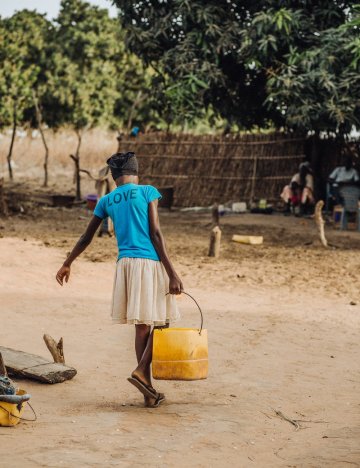Policy makers must address these gaps to make the Water Action Agenda a reality
A donkey drinks from a trough in Ethiopia. Photo credit Bill Bradshaw.
Last week, Brooke was fortunate to join thousands of water experts from international organisations, governments, NGOs and research institutes at the first UN Water Conference held in the last 50 years.
The conference covered important aspects of water provision and management, putting key focus on the role of women and leaving no one behind, the need for inter-sectoral collaborations, innovative technology and know-how, and adequate financing. The three-day event resulted in the global Water Action Agenda, which includes more than 700 voluntary commitments from around the world and billions of dollars pledged in funds.
Brooke applauds the scale and ambition of the conference and its commitments. However, we see three major gaps that the event failed to address in the water agenda.
1. The role of working animals in water provision
There are over 100 million working animals, predominantly donkeys, in the world. Many of them help communities access water every single day, which is then used by households to drink, cook, wash, water crops and for other livestock to drink. The working animal is the locally available, low cost and low tech solution that communities already have and choose to have. These animals contribute to meeting SDG 6 (clean water and sanitation) and are particularly important for women and girls, whose task it is to collect water. Brooke’s research in Pakistan has shown that if a woman has access to a donkey and a cart, she spends on average 1.5 hours a day collecting water, compared to 4 hours if she does not have these resources. Thanks to their donkeys, women have more time to engage in economic, social and educational activities of their choice. Girls are no longer pulled out of school to collect water.
Yet, this important contribution of working animals to water security and gender empowerment was not acknowledged during the Water Conference, except during a side event on Women, water and working animals that Brooke organised alongside its partners.

2. Animal health in the One Health and water nexus
Around the developing world, having a tap with running water and a flush toilet is a rare luxury. Many people still rely on water fetched from a borehole far away, and their sanitation needs are met by open sewers, with no wastewater treatment. Often livestock and people rely on the same water source, which can easily get contaminated and give rise to water-borne infectious disease.
Yet, surprisingly, hardly any sessions in the UN Water Conference addressed One Health – an approach that recognises the linkages between human health, animal health and the environment, and even in those few sessions, animal health was not mentioned. Animal health was not considered even in the context of covid-19 surveillance, even though it is a zoonotic disease that spread to humans from animals.
3. Diversity in water collaborations
Animals and water are inextricably linked. Humans and animals share this precious resource. During water shortages, farmers have to balance the needs of their crops, livestock and their families. As well as users of water and victims of drought, animals can also be a solution by helping people transport water to the household. Lastly, healthy animals help protect people and their water sources from harmful pathogens.
Quite rightly, the conference put strong emphasis on the need to collaborate across sectors and transnational boundaries. It was uplifting to see the wide variety of stakeholders pledging to work together, governments, UN agencies, civil society, and the private sector, representing various disciplines and sectors. However, the animal welfare sector was not included in the equation.
As delegates return home from the UN Water Conference, millions of working animals continue to lighten the load for women and children around the world providing water, the essential prerequisite for hygiene, food, health and education.
Brooke is calling on all those working towards the ambitious Water Action Agenda to recognise the contribution of working animals to SDG 6 and ensure that communities have what they need to take care of their animals, such as basic handling and husbandry skills, and access to affordable veterinary care.
In order to make the Water Action Agenda a reality, we cannot afford any blind spots – let’s commit to working together across all sectors, in a truly holistic, integrated manner.
